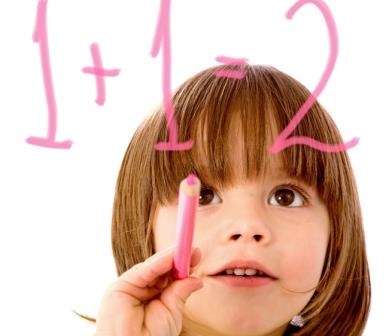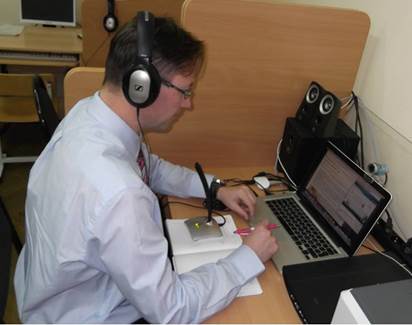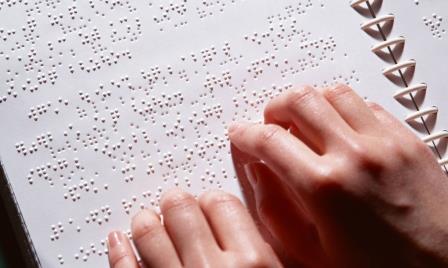References
- Brazelton T., Greenspan S. The Irreducible Needs of Children: What Every Child Must Have to Grow, Learn, and Flourish (1st ed.). Cambridge. 2000. 248 p.
- Delle A., Brdar I., Freire T., Vella-Brodrick D., Wissing M. P. The Eudaimonic and Hedonic Components of Happiness: Qualitative and Quantitative Findings. In: Social Indicators Research: An International and Interdisciplinary Journal for Quality-of-Life Measurement. 2011. № 100 (2). P. 185–207.
- Diener E., Ryan K. Subjective Well-Being: A General Overview. In: South African Journal of Psychology. 2009. № 39 (4). P. 391–406.
- Freiberg H. J. Relationships between teacher characteristics, interpersonal teacher behaviour and teacher wellbeing. In: The Journal of Classroom interactions. 2005. № 40 (2). P. 34-43.
- Hagenauer G., Hacher T., & Volet S. E. Teacher emotions in the classroom: associations with students´engagement, classroom discipline and the interpersonal teacher-student relationship. In: European Journal of Psychology of Education. 2015. № 30 (4). P. 385–403.
- İlğan A., Özü-Cengiz Ö., Atakan A. & Muhammad A. The relationship between teachers' psychological wellbeing and their quality of school work life. In: The Journal of Happiness and Wellbeing. 2015. № 3 (2). P. 159–181.
- Mehinezhat V. Relationship between High School teachers’ wellbeing and teachers’ efficacy. In: Acta Scientiarum. 2012. № 34 (2). P. 233–241.
- Paterson A., Grantham R. How to make teachers happy: An exploration of teacher wellbeing in the primary school context. In: Educational and Child Psychology. 2016. № 33 (2). P. 90–104.
- Petegem K., Creemers B. P. M., Rossel Y., Aelterman A. Relationships between teacher characteristics, interpesonal teacher behavour and teacher wellbeing. In: Journal of Classroom Interaction, 2005. № 40 (2), P. 34–43.
- Pianta R. C. Teacher–Student Interactions: Measurement, Impacts, Improvement, and Policy. In: Ricerche di Psicologia. 2019. № 1. P. 69–82.
- Roffey S. Teacher wellbeing – pupil wellbeing: Two sides of the same coin? In: Educational and Child Psychology. 2012. № 29 (4). P. 8–17.
- Ryff C. D., Singer B. Contours of positive human health. In: Psychological Inquiry. 1998. № 9 (1). P. 1–28.
- Spilt J. L., Helma M. Y., Koomen J. T. Teacher Wellbeing: The Importance of Teacher – Student Relationships. In: Educational Psychology Review. 2011. № 23 (4). P. 457–477.
- Van Petegem K., Creemers B., Rossel Y., Aelterman A. Relationships Between Teacher Characteristics, Interpersonal Teacher Behaviour and Teacher Wellbeing. The Journal of Classroom Interaction. 2005. № 40 (2). P. 34–43.
- Braun S., Roeser R. W., Mashburn A. J., Skinner E. Middle School Teachers’ Mindfulness, Occupational Health and Well-Being, and the Quality of Teacher-Student Interactions. 2019 [Electronic resource]. Electron. dan. URL: https://files.eric.ed.gov/fulltext/ED598466.pdf (date of access: 07.11.2020).
- CAPS. Learn to maintain wellbeing. Counselling and Psychological Services (CAPS). 2011 [Electronic resource]. Electron. dan. URL: http://sydney.edu.au/dam/students/documents/learn-to-maintain-wellbeing.pdf (date of access: 07.11.2020).
- Cengiz O. O., Akram M. The relationship between teachers´ psychological wellbeing and their quality of school work life [Electronic resource]. In: The Journal of Happiness and Wellbeing. 2015. № 3 (2). P. 159–181. Electron. dan. URL: https://www.researchgate.net/publication/281027037_The_relationship_between_teachers%27_psychological_well-being_and_their_quality_of_school_work_life (date of access: 07.11.2020).
- Di Brato M. Exploring Teacher Participation in Mindfulness Interventions and the Subsequent Implementation of Mindfulness in the Elementary Classroom [Electronic resource]. In: Mindfullness and Teaching. 2020. Electron. dan. URL: https://files.eric.ed.gov/fulltext/ED604918.pdf (date of access: 07.11.2020).
- Dodge R., Daly A., Huyton J., Sanders, L. The challenge of defining wellbeing [Electronic resource]. In: International Journal of Wellbeing. 2012. № 2 (3). P. 222–235. Electron. dan. DOI:10.5502/ijw.v2i3.4 (date of access: 07.11.2020).
- Duckworth A. L., Quinn P. D., Seligman M. Positive predictors of teacher effectiveness, In: The Journal of Positive Psychology. 2009. № 4 (6). P. 540–547.
- Harding S., Morris R., Gunnell D., Ford T., Hollingworth H., Tilling K., Evans R., Bell S., Jillian Grey J., Brockman R., Campbell R., Araya R., Murphy S., & Kidger J. Is teachers´mental health and wellbeing associated with students´mental health and wellbeing? [Electronic resource]. In: Journal of affective disorders. 2018. Electron. dan. URL: https://www.ncbi.nlm.nih.gov/pubmed/30189355 (date of access: 07.11.2020).
- Horn J., Wilmar T., Schaufeli B., Schreurs P. L. G. The structure of occupational well-being: A study among Dutch teachers [Electronic resource]. In: Journal of Occupational and Organizational Psychology 2004. № 77. P. 365–375. Electron. dan. URL: https://www.wilmarschaufeli.nl/publications/Schaufeli/212.pdf (date of access: 07.11.2020).
- Jennings P. A., Brown J. L., Frank J. L., Doyle S., Oh Y., Davis R., Rasheed D., DeWeese A., DeMauro A. A., Cham H., & Greenberg M. T. Impacts of the CARE for Teachers Program on Teachers’ Social and Emotional Competence and Classroom Interactions [Electronic resource]. In: Journal of Educational Psychology. 2017. Electron. dan. URL: http://dx.doi.org/10.1037/edu0000187 (date of access: 07.11.2020).
- Klassen R., Ming, Ch. Effects on Teachers' Self-Efficacy and Job Satisfaction: Teacher Gender, Years of Experience, and Job Stress [Electronic resource]. In: Journal of Educational Psychology. 2010. № 102. P. 741–756. Electron. dan. URL: https://www.researchgate.net/publication/232428271_Effects_on_Teachers'_Self-Efficacy_and_Job_Satisfaction_Teacher_Gender_Years_of_Experience_and_Job_Stress/citations (date of access: 07.11.2020).
- Kunnari I., Lipponen L. Building teacher-student relationships for wellbeing. [Electronic resource]. In: Lifelong Learning in Europe. Vol. 15. 2010. P. 63–71. Electron. dan. URL: https://www.researchgate.net/publication/305544071_Building_teacher-student_relationships_for_wellbeing/stats (date of access: 07.11.2020).
- McCallum F., Graham, A., Morrison A. Teacher Wellbeing: A review of the literature. A review of the literature [Electronic resource]. In: AIS NSW. 2017. Electron. dan. URL: https://www.aisnsw.edu.au/EducationalResearch/Documents/Commissioned%20Research/Teacher%20wellbeing%20A%20review%20of%20the%20literature%20-%20%20Faye%20McCallum%20AISNSW%202017.pdf (date of access: 07.11.2020).
- Milatz A., Lüftenegger M., Schober B. Teachers’ Relationship Closeness with Students as a Resource for Teacher Wellbeing: A Response Surface Analytical Approach [Electronic resource]. In: Frontiers in Psychology. 2015. Electron. dan. URL: https://www.researchgate.net/publication/286920034_Teachers%27_Relationship_Closeness_with_Students_as_a_Resource_for_Teacher_Wellbeing_A_Response_Surface_Analytical_Approach (date of access: 07.11.2020).
- Muntner M. Teacher-Student Interactions: The Key To Quality Classrooms. The University of Virginia Center for Advanced Study of Teaching and Learning (CASTL) [Electronic resource]. 2008. Electron. dan. URL: https://www.readingrockets.org/article/teacher-student-interactions-key-quality-classrooms (date of access: 07.11.2020).
- Renshaw T., Long A., Cook C. Assessing Teachers' Positive Psychological Functioning at Work: Development and Validation of the Teacher Subjective Wellbeing Questionnaire. [Electronic resource]. In: School Psychology Quarterly. 2015. Electron. dan. URL: https://sci-hub.do/10.1037/spq0000112 (date of access: 07.11.2020).
- Salimirad F., Srimathi N. L. The Relationship between Psychological well-being and occupational self efficacy among teachers in the City of Mysore, India [Electronic resource]. In: The International Journal of Indian Psychology. 2016. № 3 (2). Electron. dan. DOI: 10.25215/0302.037 (date of access: 07.11.2020).
- Viac C., Fraser P. Teachers’ well-being: A framework for data collection and analysis. [Electronic resource]. In: OECD Publishing. 2020. Electron. dan. URL: https://www.oecd-ilibrary.org/education/teachers-well-being_c36fc9d3-en (date of access: 07.11.2020).
- Virtanen T., Vaaland G., Sørensen E., Sigrun K. Associations between observed patterns of classroom interactions and teacher wellbeing in lower secondary school. [Electronic resource]. In: Teaching and Teacher Education. 2019. № 77. Electron. dan. URL: https://www.sciencedirect.com/science/article/pii/S0742051X18301975 (date of access: 07.11.2020).
- WHOQOL (1997). WHOQOL. Measuring quality of life. Division of Mental Health And Prevention of Substance Abuse World Health Organization. Retrieved from [Electronic resource]. Electron. dan. URL: https://www.who.int/mental_health/media/68.pdf (date of access: 07.11.2020).












